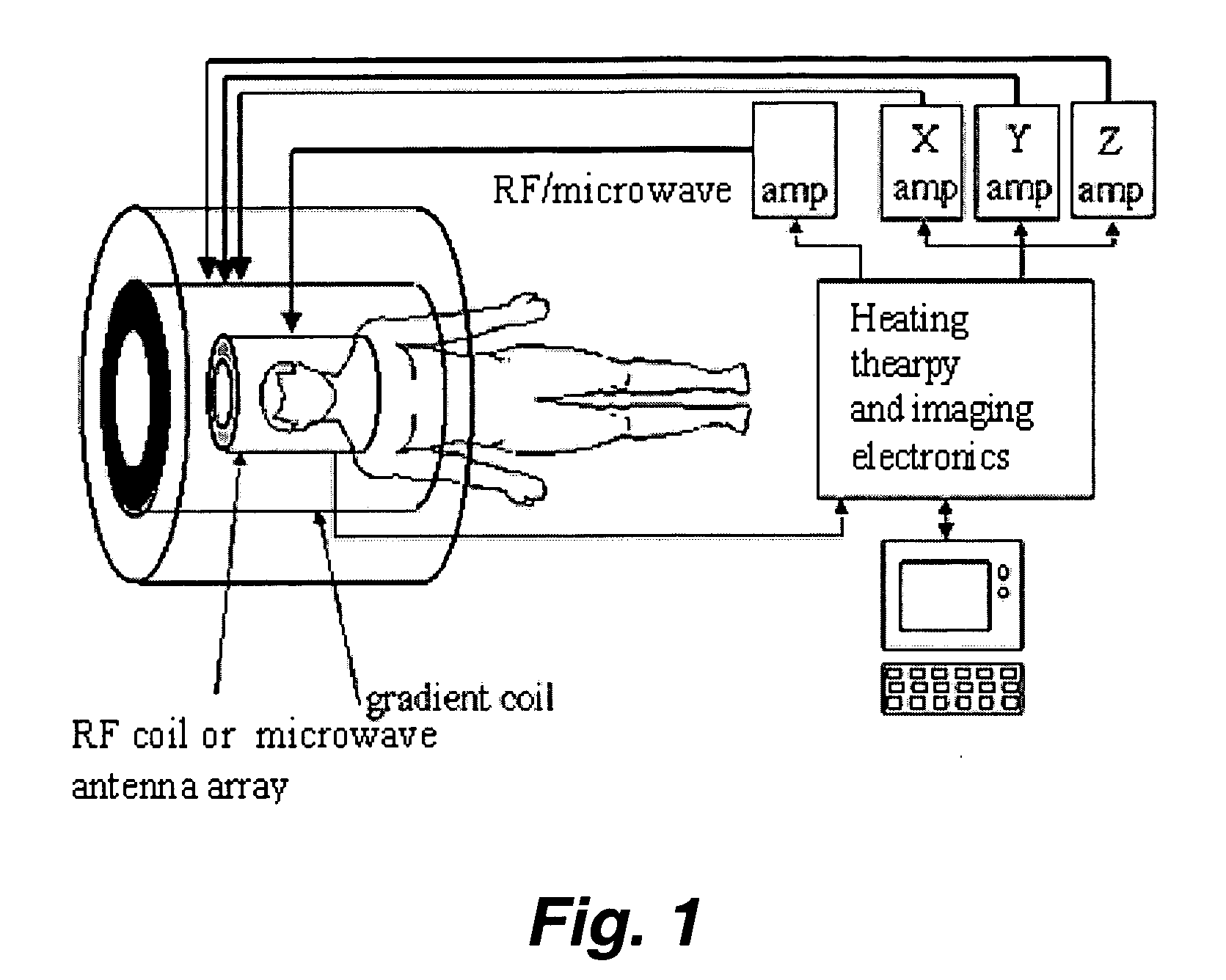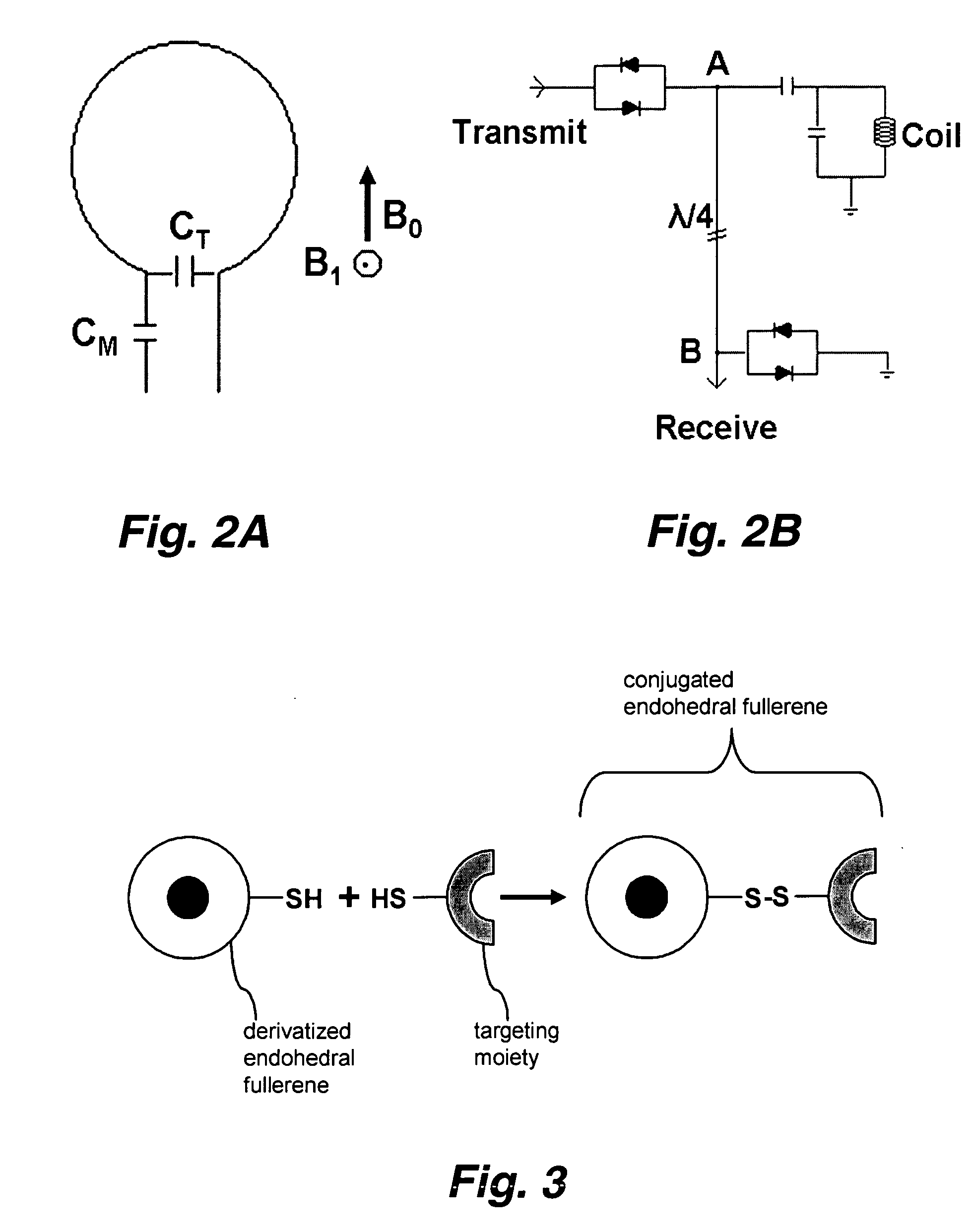Endohedral fullerenes as spin labels and MRI contrast agents
a technology of endohedral fullerene and contrast agent, which is applied in the field of electron spin labels, can solve the problems of radiation hazards, limitations of existing mri contrast agents, and radiation exposure of reporters, and achieve the effects of reducing instrumentation cost, improving sensitivity, and superior techniqu
- Summary
- Abstract
- Description
- Claims
- Application Information
AI Technical Summary
Benefits of technology
Problems solved by technology
Method used
Image
Examples
Embodiment Construction
[0039] This invention pertains to the use of paramagnetic endohedral fullerenes as spin labels, MRI contrast agents, bio-reporters, and the like. Since paramagnetic atoms inside a highly symmetric fullerene (e.g., C60) cage have only very weak electron wave function overlaps or charge transfer, the electron spin resonance relaxation time is relatively very long and the electron spin resonance peak is very sharp. In fact, the ESR peak is comparable to that observed in nuclear magnetic resonance (NMR).
[0040] Without being bound to a particular theory, it is believed that electron spin resonance (ESR) endohedral fullerene spin labels provide a superior imaging technique over NMR. The benefits include, but are not limited to increased sensitivity, decreased instrumentation cost (lower magnetic field required), improved instrument portability, improved 3-D protein structure determination (any length of protein), the ability to multiplex signals and so forth.
[0041] The ESR endohedral fu...
PUM
 Login to View More
Login to View More Abstract
Description
Claims
Application Information
 Login to View More
Login to View More - R&D
- Intellectual Property
- Life Sciences
- Materials
- Tech Scout
- Unparalleled Data Quality
- Higher Quality Content
- 60% Fewer Hallucinations
Browse by: Latest US Patents, China's latest patents, Technical Efficacy Thesaurus, Application Domain, Technology Topic, Popular Technical Reports.
© 2025 PatSnap. All rights reserved.Legal|Privacy policy|Modern Slavery Act Transparency Statement|Sitemap|About US| Contact US: help@patsnap.com



